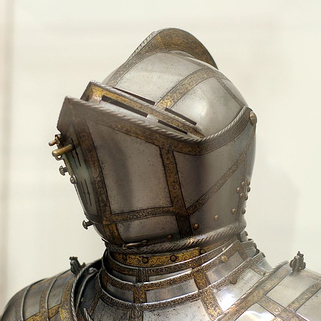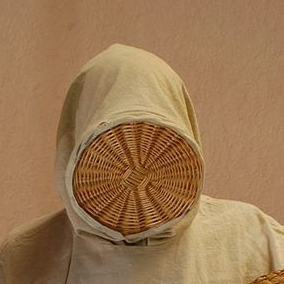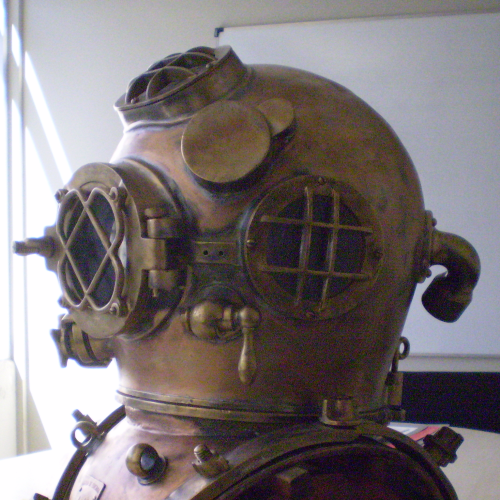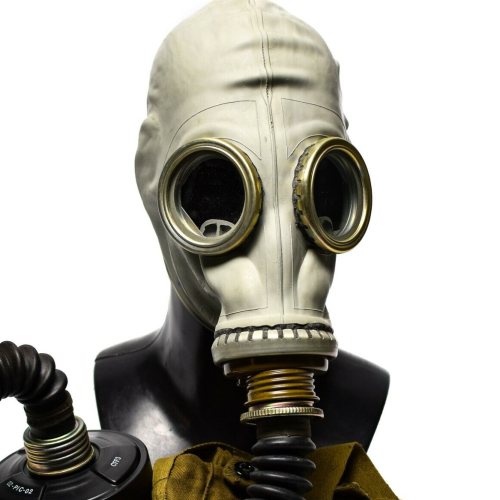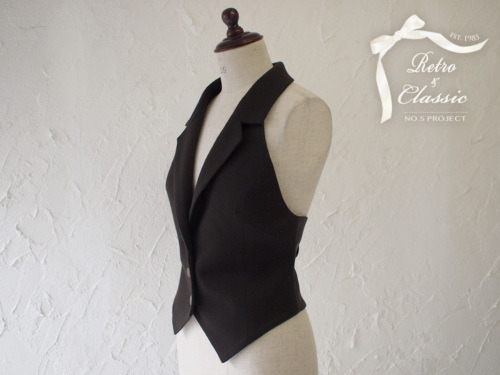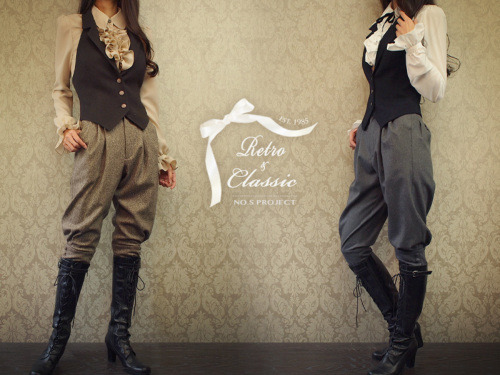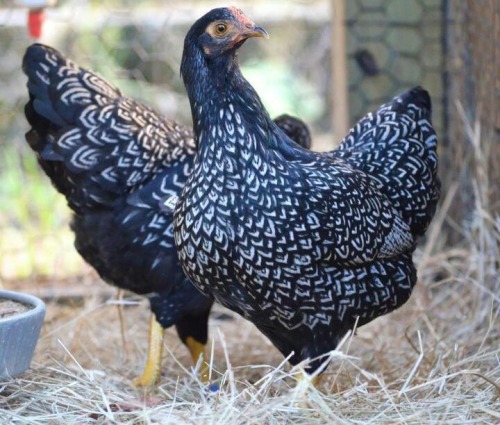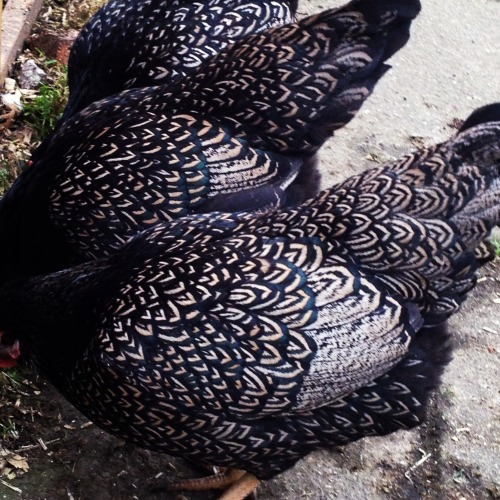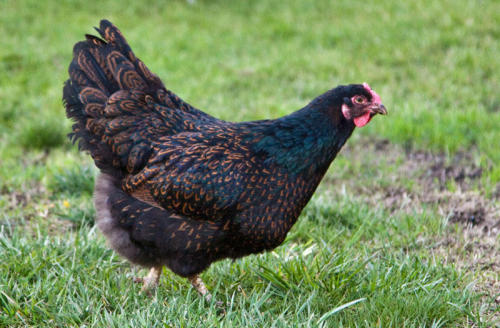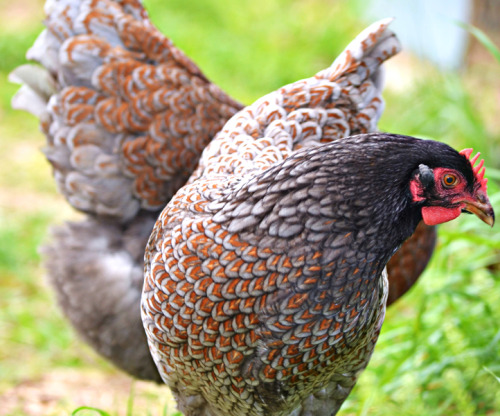Long-distance Mech Pilots Don’t Need To Worry Quite So Much About Traveling Light. When You’re Walking
long-distance mech pilots don’t need to worry quite so much about traveling light. when you’re walking around in several tons of metal, especially one built to wander, you aren’t quite to the point of needing to choose which of two keepsakes you have room in your bag for— there’s plenty of space for both.
Things are different for interstellar knights.
You see, whether wandering alone or setting off on some quest for their lord, a knight’s only home is their armor. Anything they bring with them, they must carry within that armor, even through battles— and as such, every gram and every cubic centimeter can make the difference between life and death, and every calorie chosen to replace a keepsake can make the difference between survival and starvation. As such, a knight’s inventory is heavily optimized— and so is their armor itself. What matters more, the heating system or the EVA boosters? The extra fuel storage or the emergency release mechanisms? Pick one, and you’ll have no room for the other unless you can cut corners somewhere else. Every single element of a knight’s armor is there because they made the conscious decision to put it there. Every weapon they’ve attached to their shell had to replace some traditional aspect of a life support system. Every inch of their shells are packed full of every system that can fit until it’s tight against the pilot’s skin to leave them bruised whenever they exit their shell.
it doesn’t take long for them to realize which superfluous components are the weakest link.
They start small, at first— often as simple as a haircut to help a tighter helmet fit better. Some try to lose weight, but quickly regret it when they find themselves near starvation on some distant moon. The ones that survive past their first year are the ones that are willing to take things a bit further— the toes on both feet, to make room for a slight jump booster. One of their ribs, perhaps— replaced with a battery that connects to the armor through a cable that winds around bones and muscles. It’s only a matter of time before they do something about those bones and muscles too.
those who have only heard the stories will say that a knight’s armor is their home. Those who have met one, seen them exit their armor and seen just how little is left of the body inside— they will say that a knight’s armor is a part of their body. Integrated into them until they cannot survive without it. Both are wrong. Even some knights cannot pin down the true answer— what they really feel as they connect their armor to the components of it that they have placed inside of them. The best ones do, though. They know it well.
A knight’s armor is not a part of their body. Their body is a part of their armor— their home, to be renovated and optimized as they see fit. To be replaced, improved, amputated and eviscerated so that it can be remade into the glorious works of art that the heroes of the galaxy become as they charge into battle and become a story worth remembering.
As the armor learns to reach into your veins, pulling oxygen from the carbon dioxide you exhale and weaving it back into your blood, the space once taken up by inefficient organic lungs becomes the home of the heating system, warming you from within no matter what part of the void between stars you find yourself in. As it recycles amino acids into proteins again and infuses them back into what tissues remain, you’re free to remove your old digestive organs and find a home for your armor’s main computer, kept safe at the center of your shell. Many knights choose to put their own organic brain down there next to it, incidentally making room for more optical systems in their skulls.
Your armor is no longer simply “a part of you” and you are no longer simply “a part of it.” It is you. You are it. Your bones, its power cells, your organs its systems. You are its brain and its CPU in equal measure and its beautiful exterior plates, painted with the symbols of the lord you serve or simply the cause you stand for, will inspire others to take up arms themselves and let themselves become part of it.
your body, your home, your masterpiece
More Posts from Thejunkdrawers and Others
hey when you make posts, i just want you to know, thou/thee/thy/thine/ye are like he/you(object)/your/yours/you(subject) okay? "thou art wearing shoes," "i will wear shoes for thee," okay?
you say thine if the next word starts with a vowel and thy if the next word starts with a consonant and they both mean "your" so "thine own shoes," "thy shoes," okay?
and ye means you and refers to the subject of a sentence, "ye members of the brotherhood of shoes," okay? you need this information to create better knight yaoi. i'm personally more interested in nun yuri but we are a community
TO THOSE MAKING NATIVE OCS
I see this a lot, no one has actual names, or any reference for names, that are legit Native American, varying among the tribes, for their characters.
Babynames.com and shit like that will give you names made up by white people.
However, I’ve got your solution.
Native-Languages is a good website to turn to for knowledge on a lot of native things, including native names. If you’re unsure about the names you’ve picked, they even have a list of made up names here!
Please don’t trust names like babynames.com for native names, they’re made up and often quite offensive to the cultures themselves.








The ribbon eel or Bernis eel, is a species of moray eel. The presumed juveniles and subadults are jet black with a yellow dorsal fin, in adult males the black is replaced by blue, and adult females are entirely yellow or yellow with some blue to the posterior.
How to show emotions
Part IV
How to show bitterness
tightness around their eyes
pinched mouth
sour expression on their face
crossed arms
snorting angrily
turning their eyes upward
shaking their head
How to show hysteria
fast breathing
chest heaving
trembling of their hands
weak knees, giving in
tears flowing down their face uncontrollably
laughing while crying
not being able to stand still
How to show awe
tension leaving their body
shoulders dropping
standing still
opening mouth
slack jaw
not being able to speak correctly
slowed down breathing
wide eyes open
softening their gaze
staring unabashingly
How to show shame
vacant stare
looking down
turning their head away
cannot look at another person
putting their head into their hands
shaking their head
How to show being flustered
blushing
looking down
nervous smile
sharp intake of breath
quickening of breath
blinking rapidly
breaking eye contact
trying to busy their hands
playing with their hair
fidgeting with their fingers
opening mouth without speaking
Part I + Part II + Part III + Part V
If you like my blog and want to support me, you can buy me a coffee or become a member! And check out my Instagram! 🥰
I've been reading through your blog and you're doing an amazing job at sharing diy and fixing tutorials. I had a question on weather or not you had anything on thigh bags? Or removable pockets, generally storage spaces to that aren't a backpack or a cross bag
Bags, pockets, and alternative storage
You've got a few options if you don't like backpacks or cross bags. This post is not exhaustive, just a few ideas you could try.
Hip and thigh bags:
Your back or torso might be a convenient place to keep a bag, but it's not everyone's cup of tea. Another spot that's pretty handy is your hip or thigh.
Free hip bag pattern (Stylin' Stacy)
How to turn thrifted purse into hip/thigh bag (Instructables)
Purse to clip-on belt/hip bag (EPBOT)
Free belt bag pattern (Melly Sews)
How to turn clutch into belt bag (Brit+co)
Free zippered belt bag pattern (Sew4Home)

(Image source) [ID: a person wearing a brown leather bag that's been clipped onto the belt loops of the wearer's jeans. Text: "EPBOT".]
Fanny packs:
Fanny packs are also an option: you can wear them both around your waist or across your body.
Fanny pack tutorial (Gathered)
Easy fanny pack tutorial (Sewing Times)
Free fanny pack pattern (Spoonflower)
Fanny pack video tutorial (Madam Sew)

(Image source) [ID: a fanny pack made out of a dark green fabric with white leaves and yellow leopards lies on a green background. A pair of sunglasses and a hair clip lie next to it.]
Removable pockets:
Aside from adding pockets to your clothes or enlarging existing pockets, you can also use tie-on pockets. They were commonly used in the 17th-19th century, either hidden between petticoats or worn on top of a skirt. Worth a try if you wear a lot of wrap skirts or pants!
Make your own tie-on pocket (V&A Museum)
Tie-on pocket moodboard (Pinterest)
Tie-on pockets (Bernadette Banner)

(Image source) [ID: close-up on a large tie-on pocket made out of a white fabric with red details, worn over a red and white striped petticoat and faint purple stays.]
Cargo pants:
If bags aren't your thing, there's always cargo pants! They're a type of pants covered in pockets. If you can't find any cargo pants, you can always make your own by sewing external pockets onto a pair of trousers. Make sure to use fabric that's strong enough to handle the weight of whatever you plan on putting in there.
Draft your own cargo pants pattern (Shwin & Shwin)
Add cargo pockets to pants (Sew Guide)
Cargo pants self-draft pattern (Marlene Mukai)
Add cargo pockets to pants (Sewing Mamas)

(Image source) [ID: close-up of the legs of a person wearing denim cargo pants. An external pocket with a button closure has been sewn to the side of each leg.]

-
 necrolacria liked this · 2 weeks ago
necrolacria liked this · 2 weeks ago -
 dysphoricpoetic liked this · 1 month ago
dysphoricpoetic liked this · 1 month ago -
 eyecounter liked this · 1 month ago
eyecounter liked this · 1 month ago -
 dragonessmiralis liked this · 1 month ago
dragonessmiralis liked this · 1 month ago -
 sher1bot liked this · 1 month ago
sher1bot liked this · 1 month ago -
 bantalope liked this · 1 month ago
bantalope liked this · 1 month ago -
 sir-anorak liked this · 1 month ago
sir-anorak liked this · 1 month ago -
 sadshitonmain reblogged this · 1 month ago
sadshitonmain reblogged this · 1 month ago -
 atomicdaydreams reblogged this · 1 month ago
atomicdaydreams reblogged this · 1 month ago -
 atomicdaydreams liked this · 1 month ago
atomicdaydreams liked this · 1 month ago -
 avrila reblogged this · 1 month ago
avrila reblogged this · 1 month ago -
 avrila liked this · 1 month ago
avrila liked this · 1 month ago -
 genericallilly liked this · 1 month ago
genericallilly liked this · 1 month ago -
 fair-strife reblogged this · 1 month ago
fair-strife reblogged this · 1 month ago -
 fair-strife liked this · 1 month ago
fair-strife liked this · 1 month ago -
 rory-flynn reblogged this · 1 month ago
rory-flynn reblogged this · 1 month ago -
 rory-flynn reblogged this · 1 month ago
rory-flynn reblogged this · 1 month ago -
 rory-flynn liked this · 1 month ago
rory-flynn liked this · 1 month ago -
 fleshmetalinterface reblogged this · 1 month ago
fleshmetalinterface reblogged this · 1 month ago -
 inherentlycontradictory liked this · 1 month ago
inherentlycontradictory liked this · 1 month ago -
 somedepressedlesbian liked this · 1 month ago
somedepressedlesbian liked this · 1 month ago -
 feytalagog liked this · 1 month ago
feytalagog liked this · 1 month ago -
 feytalagog reblogged this · 1 month ago
feytalagog reblogged this · 1 month ago -
 doomsdayartificer liked this · 1 month ago
doomsdayartificer liked this · 1 month ago -
 tenkyoken liked this · 1 month ago
tenkyoken liked this · 1 month ago -
 a-pile-of-ambiguous-ooze reblogged this · 1 month ago
a-pile-of-ambiguous-ooze reblogged this · 1 month ago -
 a-pile-of-ambiguous-ooze liked this · 1 month ago
a-pile-of-ambiguous-ooze liked this · 1 month ago -
 mlmiii liked this · 1 month ago
mlmiii liked this · 1 month ago -
 quietpython liked this · 1 month ago
quietpython liked this · 1 month ago -
 mothdust23 liked this · 1 month ago
mothdust23 liked this · 1 month ago -
 kobuskobus liked this · 1 month ago
kobuskobus liked this · 1 month ago -
 vampiresplunderedourcats liked this · 1 month ago
vampiresplunderedourcats liked this · 1 month ago -
 sleepydollposting reblogged this · 1 month ago
sleepydollposting reblogged this · 1 month ago -
 sanstasyfan liked this · 1 month ago
sanstasyfan liked this · 1 month ago -
 leathefroslass liked this · 1 month ago
leathefroslass liked this · 1 month ago -
 lavitts reblogged this · 1 month ago
lavitts reblogged this · 1 month ago -
 lavitts liked this · 1 month ago
lavitts liked this · 1 month ago -
 edensiiln reblogged this · 1 month ago
edensiiln reblogged this · 1 month ago -
 edensiiln liked this · 1 month ago
edensiiln liked this · 1 month ago -
 nebula-valentine reblogged this · 1 month ago
nebula-valentine reblogged this · 1 month ago -
 nebula-valentine liked this · 1 month ago
nebula-valentine liked this · 1 month ago -
 haaaaaaaaaz reblogged this · 1 month ago
haaaaaaaaaz reblogged this · 1 month ago -
 haaaaaaaaaz liked this · 1 month ago
haaaaaaaaaz liked this · 1 month ago -
 mothgirlthing liked this · 1 month ago
mothgirlthing liked this · 1 month ago -
 thimbledoll reblogged this · 1 month ago
thimbledoll reblogged this · 1 month ago -
 dicegremlin21 reblogged this · 1 month ago
dicegremlin21 reblogged this · 1 month ago -
 dicegremlin21 liked this · 1 month ago
dicegremlin21 liked this · 1 month ago -
 gwenderbent liked this · 2 months ago
gwenderbent liked this · 2 months ago -
 bentryaudio liked this · 2 months ago
bentryaudio liked this · 2 months ago

A side blog where I'll *try* to keep things organised.yeahthatsnotgoingtolastlong
241 posts
